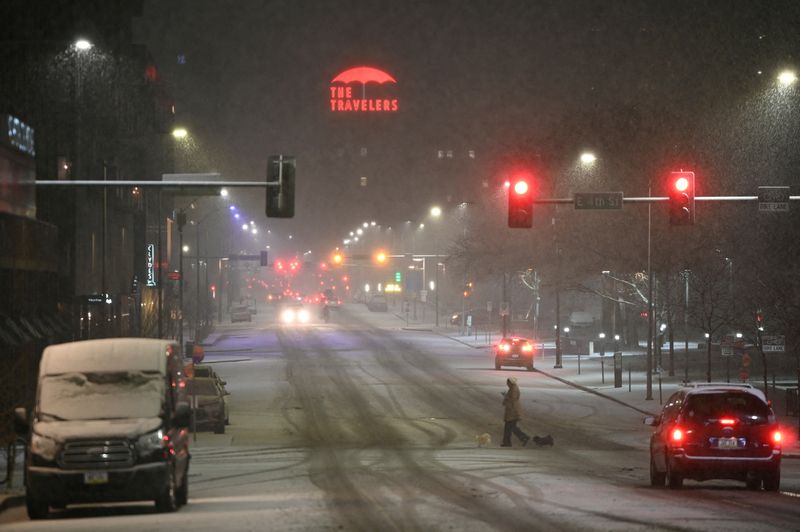By Scott DiSavino
(Reuters) - Frigid weather moving into the central U.S. will boost natural gas demand to record highs early next week, according to analysts forecasts, putting power and gas prices on track to hit their highest levels since December 2022.
In December 2022, a massive winter storm, known as Elliott, boosted gas use to an all-time high and nearly caused the collapse of some electric and gas systems in the eastern half of the country after dozens of power plants shut due in part to a lack of fuel.
The extreme weather expected next week could also test power grids, as electricity demand soars and some gas supply is cut due to freezing temperatures.
PJM Interconnection, the largest U.S. power grid operator covering parts of 13 states from Illinois to New Jersey, and the Electric Reliability Council of Texas (ERCOT), the Texas grid operator, have both issued weather watches for the period ranging from Jan. 14-17.
ERCOT anticipates normal grid conditions, but warned of higher electricity demand and the chance of lower reserves.
A catastrophic freeze in Texas and other U.S. Central states in 2021 knocked out power to millions for days and left over 200 people dead. Meanwhile, several power generators agreed to pay PJM $1.2 billion because they were unable to operate when called upon during Winter Storm Elliott in December 2022.
Those events were caused in part by a drop in gas supplies from freezing oil and gas wells, pipes and other equipment that forced some power grid operators and utilities to impose rotating outages due to a lack of enough electricity supply.
Extreme cold this week has already caused gas supplies to decline due to so-called "freeze-offs" at production sites in Colorado, Wyoming and North Dakota.
U.S. gas output was on track to drop by 3.7 billion cubic feet per day (bcfd) over the past four days to a preliminary 10-week low of 104.5 bcfd on Thursday, according to financial firm LSEG. [NGA/]
That decline so far was small compared with total gas supply losses of around 19.6 bcfd during Winter Storm Elliott and 20.4 bcfd during the February freeze of 2021, according to LSEG data.
U.S. gas demand, including exports, will hit 171.4 bcfd on Jan. 15 and 174.5 bcfd on Jan. 16, according to LSEG. That would top the current all-time high of 162.5 bcfd set on Dec. 23, 2022, according to federal energy data from S&P Global (NYSE:SPGI) Commodities Insights.
One billion cubic feet of gas can fuel about 5 million U.S. homes for a day.
Power prices at the PJM West Hub, which covers an area from northwestern Pennsylvania to Washington, D.C., were on track to jump from around $35 per megawatt hour (MWh) for Thursday to about $158 next week, according to LSEG the Intercontinental Exchange (ICE (NYSE:ICE)).
That would be the highest next-day price for PJM West power since December 2022 when it topped out at $179 per MWh. It averaged $37 in 2023 and $42 from 2018 to 2022.

Spot gas prices at the U.S. Henry Hub benchmark in Louisiana, meanwhile, were on track to jump from around $3.25 per million British thermal units (mmBtu) for Thursday to about $4.20 next week, according LSEG and ICE data.
That would be the highest next-day price for Henry Hub gas since December 2022 when it hit $7.20 per mmBtu. It averaged $2.54 in 2023 and $3.61 from 2018 to 2022.